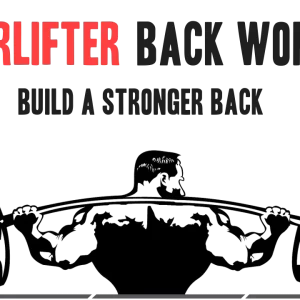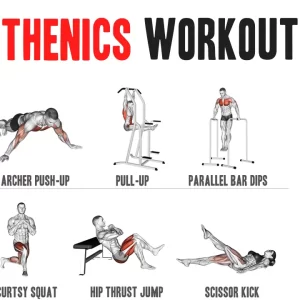Contents
In the quest for natural ways to boost testosterone levels, many men are trying an unconventional method—ice baths. The idea of dipping into freezing cold water may make you shudder, but a growing body of research suggests that cold exposure therapy could offer a range of health benefits, including a potential boost in testosterone production.
As men age, testosterone levels naturally decline, which can lead to a host of symptoms such as decreased libido, reduced muscle mass, and low energy levels. While testosterone replacement therapy is an option, it comes with potential side effects and risks.
This is where cold exposure therapy, particularly ice baths, comes into play. By exposing the body to cold temperatures, studies suggest that it may trigger a series of physiological responses that could support testosterone production. From activating the hypothalamus-pituitary-gonadal (HPG) axis to increasing blood flow and oxygenation to the testes, cold therapy may offer a natural, non-invasive way to optimize male hormone levels.
In this article, we’ll plunge into the science behind cold exposure and testosterone, examining the evidence from key studies and exploring how you can incorporate ice baths into your wellness routine.
Understanding Testosterone
Testosterone, a primary male sex hormone, plays a vital role in both men and women, though it is more abundant in males. It is crucial for developing male sexual characteristics, including muscle mass, bone density, and body hair growth. Testosterone also contributes to libido, mood regulation, and cognitive functions. Its production is mainly in the testes in men and the ovaries in women, with some also synthesized in the adrenal glands.
Lots of things can mess with your testosterone level. Age is a significant determinant, as testosterone production naturally decreases with age. Your lifestyle choices, like how much you work out, what you eat, and even the quality of your sleep can make a big difference too. Regular exercise can boost testosterone levels, while a diet lacking essential nutrients or sleep deprivation can lead to a decline. Stress is another critical factor; chronic stress elevates cortisol, which inversely affects testosterone production.
When testosterone levels dip (called hypogonadism), it can significantly shake up your health and overall sense of feeling good. From a physiological standpoint, low testosterone is quite the wrecking ball; it dwindles muscle bulk, piles on unwanted fat, and compromises bone integrity to an extent where it becomes fracture-prone. Men with low testosterone might experience fatigue, mood swings, and a decrease in libido.
But it doesn’t just stop at physical issues, low testosterone can mess with your mind too. It can leave you feeling down in the dumps and snappy as a turtle on a bad day. Not to mention, focusing becomes harder than finding a needle in a haystack! Therefore, maintaining optimal testosterone levels is essential for overall health and well-being.
Examining the Evidence: Studies on Ice Baths and Testosterone
There are quite a few studies that have investigated the potential link between cold exposure, such as from ice baths, and the effects they have on the body. While individual studies have shown mixed results, the overall evidence points to cold therapy as a promising natural method to optimize male hormone levels.
Let’s take a closer look at three studies that support the use of ice baths and cold exposure to support testosterone production.
Study 1: The Cold Catalyst
The European Journal of Applied Physiology rolled out a compelling study, showing that when men immersed themselves in cold water (about 57°F) there was an impressive uptick in two crucial brain chemicals norepinephrine (a 500% increase) and dopamine (a 250% increase) compared to bathing in warmer water (90°F). These chemicals trigger a chain reaction in the body, known as the HPG axis, which eventually cranks up testosterone production.
Here’s how it works: your brain, specifically the hypothalamus, releases a hormone that signals the pituitary gland to secrete another hormone, which in turn tells the testicles to make more testosterone. Simple as that! The quick surge in testosterone, it’s like your body’s own stress-buster. This temporary boost in testosterone helps the body cope with stress. Although testosterone levels quickly return to normal, consistent exposure to cold temperatures may help maintain slightly higher baseline levels over time, an adaptation that likely evolved to help humans face challenges and threats.
Testosterone Benefits In a Nutshell
- Cold water immersion significantly increases norepinephrine and dopamine, triggering the HPG axis to produce more testosterone.
- Consistent exposure to cold temperatures may help maintain slightly higher baseline testosterone levels over time, an adaptation that likely evolved to help humans face challenges and threats.
Study 2: Cold Water Swimmers
A recent 2019 study called “Regular cold water swimming during winter time affects resting hematological parameters and serum erythropoietin” investigated how swimming in cold sea water during the winter months impacts various blood markers and a hormone called erythropoietin (EPO) in the body.
The researchers found that regular exposure to cold water led to changes in red blood cells, hemoglobin, platelets, folate, and immunoglobulins. Interestingly, there was a surge in EPO, the hormone that kicks off the production of red blood cells. In simple terms, this study suggests that consistently swimming in cold water during winter can trigger the body to adjust its blood composition and increase EPO, potentially as a way to build resistance to the cold stress.
Testosterone Benefits In a Nutshell
- Red blood cells carry oxygen to the testes, which is essential for testosterone production. Higher red blood cell counts may improve oxygen delivery and support testicular function.
- Hemoglobin, the protein in red blood cells that binds oxygen, directly influences the amount of oxygen reaching the testes. Increased hemoglobin levels could enhance oxygen supply and stimulate testosterone synthesis.
- Erythropoietin (EPO), has been shown to increase testosterone levels in some studies. Higher EPO concentrations may indirectly boost testosterone by promoting red blood cell formation.
- Improved blood flow due to increased red blood cells and hemoglobin may also benefit testicular health and hormone production.
Study 3: Seasons’ Sway on Fertility
A 2023 study “Impact of Seasonal Variations on Semen Parameters: A Retrospective Analysis of Data from Subjects Attending a Tertiary Care Fertility Centre” found how different seasons, particularly colder temperatures, affect various aspects of male fertility.
The researchers analyzed semen samples from men attending a fertility clinic over a 4-year period. They found that during colder months (winter and rainy seasons), there were some improvements in semen quality compared to the summer. Sperm concentration showed an increasing trend from summer to winter, and the percentage of sperm with head and tail defects was lower in the rainy season. However, the differences in sperm concentration across seasons were not statistically significant. The research hints that guys might be more fertile during the colder months.
Testosterone Benefits In a Nutshell
- Sperm concentration showed an increasing trend from summer to winter, although not statistically significant. Higher sperm counts could potentially be linked to increased testosterone.
- The percentage of sperm with head and tail defects was lower in the colder rainy season. Improved sperm morphology may indicate a more favorable hormonal environment, including higher testosterone levels.
How to Start with Cold Exposure Therapy
If you’re ready to harness the potential testosterone-boosting benefits of cold exposure, the best place to start is right in your own bathroom with cold showers. Begin by gradually lowering the temperature at the end of your normal shower routine, aiming for a 30-second burst of cold water. Over time, work your way up to 2-3 minutes of cold exposure per shower. This gradual approach allows your body to adapt and build resilience to the cold stress.
Once you’re comfortable with cold showers, you can progress to ice baths. Fill a bathtub with cold water and add ice until the temperature reaches around 50-59°F (10-15°C). Start with a 1-2 minute immersion and gradually increase the duration over time, listening to your body’s response. Aim for 2-3 ice baths per week, as consistency is key to reaping the potential testosterone-boosting benefits.
To make cold therapy a long-term habit, consider investing in a dedicated cold plunge tub. You can either purchase a ready-made cold plunge tub from an online store like Plunge Junkies or create a DIY version using a large stock tank and water chiller or a chest freezer. A dedicated tub allows you to control the temperature more precisely and makes the process more convenient and accessible. Plus, having a tub specifically for cold immersion can serve as a visual reminder and motivator to stick with your cold therapy routine.
Remember, the effects of cold exposure on testosterone levels are not immediate; it’s a long-term play. Consistency and patience are essential. Aim to incorporate cold therapy into your weekly routine, just like you would with exercise or a healthy diet. Over time, as your body adapts to the cold stress, you may start to notice improvements in your overall well-being, energy levels, and potentially, your testosterone levels.
As with any new health practice, it’s important to listen to your body and consult with a healthcare professional if you have any concerns or underlying health conditions. Start slow, be patient, and embrace the discomfort – the benefits of cold exposure therapy may be well worth the initial chill!
Research
- Srámek, P., Simecková, M., Janský, L., Savlíková, J., & Vybíral, S. (2000). Human physiological responses to immersion into water of different temperatures. European journal of applied physiology, 81(5), 436–442. https://doi.org/10.1007/s004210050065
- Checinska-Maciejewska, Z., Niepolski, L., Checinska, A., Korek, E., Kolodziejczak, B., Kopczynski, Z., Krauss, H., Pruszynska-Oszmalek, E., Kolodziejski, P., & Gibas-Dorna, M. (2019). Regular cold water swimming during winter time affects resting hematological parameters and serum erythropoietin. Journal of physiology and pharmacology : an official journal of the Polish Physiological Society, 70(5), 10.26402/jpp.2019.5.10. https://doi.org/10.26402/jpp.2019.5.10



